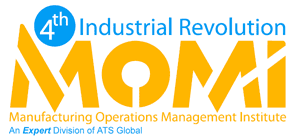This course is an overview of the use of service-oriented architecture (SOA) for manufacturing as explained in the MESA SOA for Manufacturing Guidebook and in the Manufacturing 2.0 approach from the Gartner Group. Manufacturing 2.0 explains the manufacturing-specific requirements for SOA. There are differences between the SOA used for the enterprise through an Enterprise Services Bus (ESB) and the SOA used by the near real-time MES/MOM and automation systems in a plant through a Manufacturing Services Bus (MSB). Manufacturing 2.0 is differentiated from the so-called Manufacturing 1.0 architectures based on stand-alone client/server data base applications that attempted to represent business process modeling through point-to-point interfaces and custom data transformation between applications. The course provides a brief introduction to Manufacturing 2.0 and an overview of SOA elements and mechanisms. The separate manufacturing services bus (MSB) is required due to a high number of transactions, a high parametric data load and near real-time requirements for operations applications. The MSB may be scaled down to a plant or an area of a plant or across multiple production facilities depending on the transaction/data load and response requirements of the operations workflows being supported by the plant applications. A key aspect of Manufacturing 2.0 is the explanation that manufacturing master data management (mMDM) is different than MDM on the ESB for the enterprise business processes. Manufacturing MDM services a different set of applications for manufacturing operations management such as dispatching, route execution, and alarm & event applications, which have a much more granular set of objects, attributes, and production rules than MDM that represents enterprise planning, (master) scheduling, and logistics. The mMDM topic is mentioned with a basic definition as an identified critical SOAm design component. The form and role of MDM is very dependent on the specific industry and its product set, market segment, production type and complexity, and supply chain type. For instance, MDM is much different from life sciences to automotive to aerospace to electronics. Due to the high change rate of the Manufacturing 2.0 applications due to new product introductions, changes in SKU (stock-keeping units) counts, evolving process technologies documents and production scaling, Manufacturing MDM requires dedicated set of tools and services.
Learner will be able to:
- Recognize two primary requirements for a Manufacturing 2.0 real-time architecture to enable a global supply network
- Identify why plant agility and excellence simultaneously requires a SCALABLE Continuous Improvement Manufacturing 2.0 approach
- List differences between the Enterprise SOA through an Enterprise Services Bus (ESB) and Mfanufacturing SOA required for near real-time operations processes, MES/MOM, and automation through a Manufacturing Services Bus (MSB)
- Recognize differences between Manufacturing Master Data Management (mMDM) and MDM on the ESB for the enterprise business processes
|
|
Assessment Test and Exercises:
1. In-Course Formative Assessment Test: 7 Questions, Open notes in discussion, Answers recorded in Test Form.
2. Out-Course Summative Assessment Test: 7 Questions, Open notes in self study, Answers recorded in Test Form.
Course Prerequisites:
None
Reference Materials:
SOA in Manufacturing Guidebook
